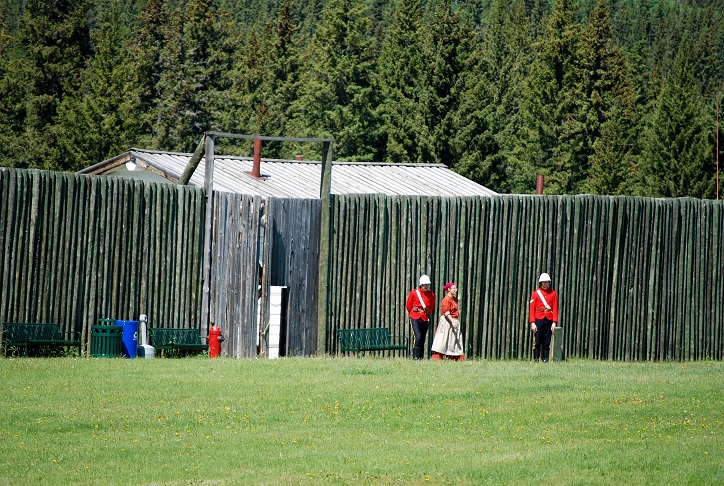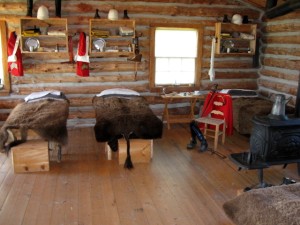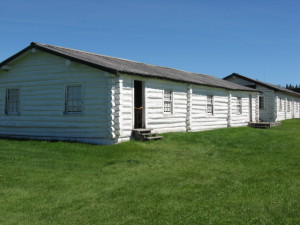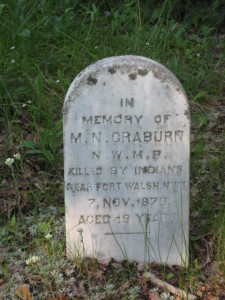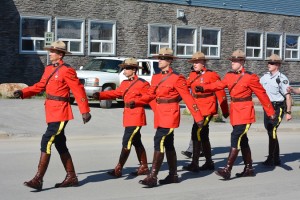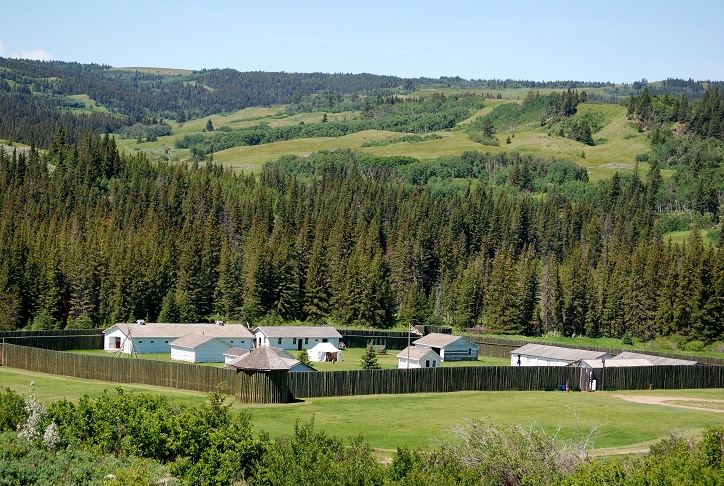
The North-West Mounted Police (NWMP)
Visit an 1870s Mounted Police Fort Updated June 2022
In the 1800s, the western half of North America was unsettled and dangerous. It was not without justification that it was known as the “Wild West”. Some of the dangers included hostile Indians, but far more hazardous were lawless white men who saw the west as a safe place to rob and kill people with plenty of places to hide and few law enforcement officers to catch them.
The United States of America and Canada handled this problem very differently. The USA sent the army to put the Indians on reservations and hunt down any that refused to go. Outlaws were supposed to be controlled by town and district sheriffs, but a killer usually had only to travel to a different district to be safe.
In 1873, at Cypress Hills (in Canada), there was a gun battle with American and Canadian hunters against the local Indians who were accused of stealing some horses. The ensuing gunfight resulted in one hunter and more than twenty Indians being killed. Another big problem was whiskey traders who took advantage of Indians by trading diluted whiskey in return for valuable furs. As a result, there was a desperate need for law enforcement in Canada’s west. Canada’s government approached the problem with a new method. They created a federal police force in 1873 called the North-West Mounted Police to maintain law and order and assert sovereignty over what was then called Canada’s Northwest Territories. This was no ordinary police force but more like a cavalry unit, complete with cannons and other military characteristics. Their uniform consisted of blue pants and a scarlet tunic.
Fort Walsh
The NWMP were responsible for maintaining law and order over a vast area from central Canada to the Pacific Coast and north to the Arctic Ocean. They built several forts as bases throughout their area of responsibility. They treated white and Indian people equally and soon had the respect of friends and foes.
Some of the forts they built are now major cities in western Canada, such as Calgary and Edmonton. The largest was in the Cyprus Hills, just north of the American border and near the present-day border between the Canadian provinces of Alberta and Saskatchewan. When the fort was built in 1875, the area was still a hotbed of illegal whiskey trading, horse theft and violence. Fort Walsh was named after Inspector Walsh, who was one of the first to join the force and was the first commanding officer of the fort.
About 150 to 250 constables staffed it with four seven-pound mountain guns and two nine-pound field guns. It became the headquarters of the force. The “Mounties”, as they became known, ended the whisky “trade and established law and order. They were also responsible for customs and excise and for patrolling the American border. They managed to stop the white people from selling whiskey to the Indians and prevented the Indians from stealing horses. By 1883, the area was peaceful. The headquarters was moved to Regina in 1882, and only a small force remained at Fort Walsh. As a military force was no longer needed in the area, the fort was closed in 1883, and the area became a ranch. Cattle and horse ranching is still one of the main activities in the area.
Royal Canadian Mounted Police (RCMP)
In 1904, the NWMP became the Royal North-West Mounted Police. In 1920 the RNWMP was merged with the Domain Police (a federal police force in eastern Canada) to become the Royal Canadian Mounted Police.
RCMP Remount Unit
In 1939, the Commissioner of the force passed a ruling that all horses belonging to the RCMP must be black to create a uniform appearance like their riders. This greatly limited the availability of horses to the force, so they decided to establish their own horse ranch. In 1942, the RCMP purchased the ranch that was formerly Fort Walsh. Instead of building a 1900s-style ranch, the RCMP decided to reconstruct the old fort. They studied old photographs and interviewed old police constables who had served at the fort in their youth. After the fort’s construction, the RCMP began raising identical, large, black horses. In addition to raising horses, the fort was also the riding school for recruits. All RCMP officers were required to have riding skills until 1966. In 1968, Fort Walsh closed again. However, the RCMP still maintain a mounted unit. You might see mounted officers patrolling federal buildings and remote areas, but most constables today ride around in cruisers and are not required to ride a horse. Today the small Remount Unit is located at Pakenham, Ontario.
Historical Site
In 1968, Fort Walsh was given to Parks Canada, the government agency in charge of Canada’s National Parks. Most of the buildings were refurbished to portray life at the fort in its early days.
Fort Walsh Today
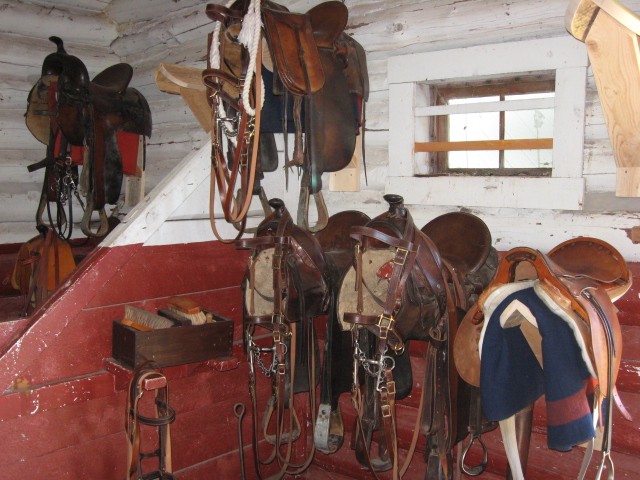
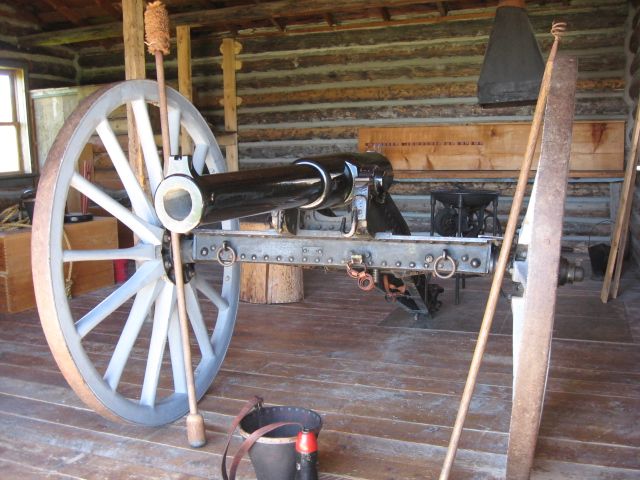
Visitors to the fort can travel back in time to the 1870s when the fort was new. During the summer months, a group of people dressed as police officers and period civilians occupy the fort and explain its history to tourists. You might see the “Mounties” on parade or firing their cannon. You will learn about the fort’s history, the area, and the people who lived here during that period.
NWMP Graveyard
You will have to hunt a bit to find the NWMP Graveyard. It is not near the fort and is not mentioned in any tours, but guides will tell you where to find it if you ask. I often visit graveyards to learn more about the people who lived in a particular area. Especially old graveyards that are no longer in use. Most people don’t bother with them, but I find cemeteries fascinating. Boot Hill graveyard in Tombstone, Arizona, is another fascinating one.
How to get there
Fort Walsh is a federal government park, but it is located on the border of Cypress Hills Interprovincial Park, which straddles the border of the provinces of Alberta and Saskatchewan. The fort is on the Saskatchewan side of the park. Drive south on Highway 2 from Maple Creek, Saskatchewan. If you are coming from the USA, enter on the Saskatchewan side (not Alberta), north of Havre, Montana.
Special Days
Whiskey Plays
Occasionally there will be a play about the whiskey traders who were instrumental in problems around Cypress Hills, the arrival of the Mounties, and the building of the fort.
Trades Day
Trades Day. You can witness people who lived at the fort in the early days plying their trade, such as blacksmiths, cooks and other tradespeople.
RCMP Musical Ride
The Royal Canadian Mounted Police occasionally return to the fort for the day and perform their Musical Ride. If you are lucky enough to be in the area at the time, this will be a remarkable event not to be missed.
Events change from year to year. Contact the Fort for the latest information about events, hours, fees, etc
The RCMP Today and some History
Today, the Royal Canadian Mounted Police are responsible for law enforcement and security in all of rural Canada except for the two provinces of Ontario and Quebec, which have their own force, 150 municipalities (most larger cities such as Edmonton have their own police force), 600 aboriginal communities and three international airports. In addition, they provide protection services for the Prime Minister, the Queen when she is in Canada, and other visiting foreign dignitaries.
Policemen of the Arctic, horses, boats and aircraft
They patrolled the Arctic by dogsled until 1969, and all officers were required to be skilled at horse riding until 1966. The force still uses mounted police officers; you might see some of them if you visit the Parliament Buildings. You will mostly see the RCMP today in police cars, but they also have ships and aircraft. The RCMP ship St Roch was the first to navigate the Northwest Passage in 1940-42. Today they are responsible for law enforcement in waters off the coast of Canada and internal lakes. They have seven helicopters and 28 aircraft in addition to their five ships.
An International Force
The RCMP is somewhat of an international force. They have been deployed to Haiti, Afghanistan and Iraq, training their police forces. During wartime, the RCMP served in the Boar War in Africa. The king awarded them the title of Royal for their service in that conflict. They formed two squadrons of mounted cavalry for service in Europe during the First World War and one to serve in the Siberian Expeditionary Force in Russia. One company of RCMP served as military police in Europe during the Second World War. Mounted Troops of the RCMP have served as Life Guards at Buckingham Palace in London, England. Today the RCMP have officers doing criminal intelligence work in 23 countries worldwide.
Women in the RCMP
In 1974, the RCMP began accepting women in the force.
Want to Join?
Would you like to join the Royal Canadian Mounted Police?
Click here. Canadian residents only.
